Force of nature: the Oculus channels the Sri Lankan landscape through its form

Rising up from the flat grasslands of Jaffna, Sri Lanka, the Oculus, designed by architecture firm Palinda Kannangara, is a residence for staff and visitors at the Jaffna wind power farm. Commissioned by Windforce, the Oculus sits at the first point of the axis which extends across the landscape to the wind farm hosting 16 wind power turbines, and the main monitoring station building, where the wind farm is controlled from.
The Oculus is named after the circular opening carved out in the centre of the building’s square roof. A pivot of natural light, water and the changing seasons, the oculus radiates light through the building and frames a view of the towering windmill beside it. Directly beneath the opening on the ground floor, a small pool of water gathers reaching various heights of depth across the seasons and catching the reflection of the windmill.
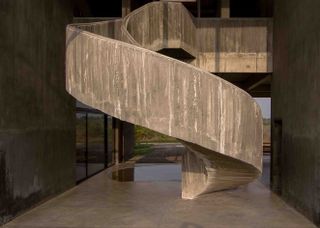
The sculptural staircase, exposed to the open landscape, meets the oculus pool in a dramatic architectural moment
A force of architecture with its concrete form is sturdy and strong, the design is not imposing on the environment, yet sensitive to its seasonal fluctuations and open to its beauty. High ceilings of 14ft and cut out spaces without windows reduce its solidity and open up the ground floor to the grassy landscape, which encroaches into the space at the edges.
The ground floor, which is hoisted two feet above the landscape, has a social open-plan design with the shallow pool at the core. The kitchen and dining room are enclosed, as are the caretakers quarters. A rough spiral staircase made of stone pavers winds up to the upper level where the sleeping and living quarters for visiting engineers, staff members and guests are located. Cut out windows in the four corner bedrooms reveal the depth of the concrete, into which glazed and timber screens can be hidden within.
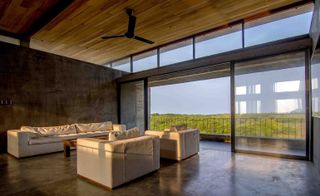
Microclimatic modulation was used to moderate temperature including timber screens and extended sunshades, fused seamlessly into the design
The timber screens as well as additional sunshades are designed as layers of protection against the extreme heat of the Jaffna sun, filtering light through to the inner glazed screens. Opened up they display endless views – after the monsoon, the landscape is blessed with clear blue skies extending across the scrubland.
Responding in colour and materiality to the earthy hues of the seasonal grasses, the tidal mudflat that extend for miles around the building and the blue-grey surface of the Jaffna lagoon, the polished cement floors and matte cement finished walls of the Oculus are cool and tactile like the exposed concrete form – only the bedrooms are painted white to soften the interior.
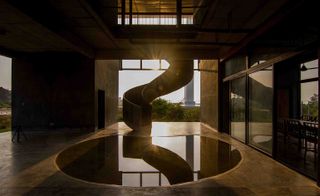
The 4,715 sq ft building made of exposed concrete with cement floors and walls within is simple and functional yet extremely sensitive to its surroundings

The sculptural spiral staircase is made from stone pavers with an eroded aesthetic that blends with the natural landscape
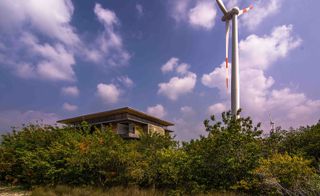
An oculus in the centre of the roof reveals views of the windmill beside the building
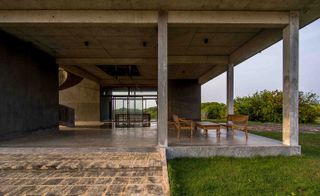
Inner glazed screen disappear neatly into the walls opening up the interior to uninhibited views of the surrounding scrubland

The upper floor consists of a living area, two rooms for staff and two rooms for guests, the four bedrooms are located in the four corners of the rectangular plan
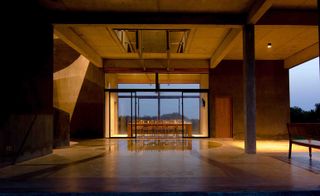
The landscape architect on the project was Varna Shashidhar
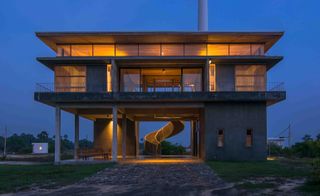
The roof supported by steel props slopes inwards toward the oculus in the centre of the roof, collecting water below, moderating temperature during the hot monsoon season
INFORMATION
For more information, visit the Palinda Kannangara website
Wallpaper* Newsletter
Receive our daily digest of inspiration, escapism and design stories from around the world direct to your inbox
Harriet Thorpe is a writer, journalist and editor covering architecture, design and culture, with particular interest in sustainability, 20th-century architecture and community. After studying History of Art at the School of Oriental and African Studies (SOAS) and Journalism at City University in London, she developed her interest in architecture working at Wallpaper* magazine and today contributes to Wallpaper*, The World of Interiors and Icon magazine, amongst other titles. She is author of The Sustainable City (2022, Hoxton Mini Press), a book about sustainable architecture in London, and the Modern Cambridge Map (2023, Blue Crow Media), a map of 20th-century architecture in Cambridge, the city where she grew up.
-
 Real Motors’ Project: ARES electric motorbike may revolutionise two-wheeled travel
Real Motors’ Project: ARES electric motorbike may revolutionise two-wheeled travelProject: ARES is an all-electric sports bike with science-fiction styling and old-school performance. Its makers hope it’ll be a hit with a new generation of riders
By Jonathan Bell Published
-
 Hermès captures the sheer delight of summer with new menswear collection
Hermès captures the sheer delight of summer with new menswear collectionHermès’ diaphanous menswear for S/S 2024 is Véronique Nichanian’s ode to sultry summer days
By Jack Moss Published
-
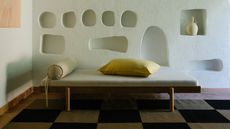 Japan in Milan: the best of Japanese design at Milan Design Week 2024
Japan in Milan: the best of Japanese design at Milan Design Week 2024Discover the best of Japanese design showcasing innovative designs from terrazzo tables to tree-inspired textiles at Milan Design Week and Salone del Mobile 2024
By Danielle Demetriou Published
-
 Four Mumbai apartments are transformed into an art-filled contemporary home
Four Mumbai apartments are transformed into an art-filled contemporary homeDesigner Rajiv Saini unites four Mumbai apartments in the Indian city’s Colaba district into a single, expansive, art-filled home for a family
By Ellie Stathaki Published
-
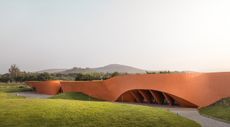 India’s Hampi Art Labs is a piece of architecture at one with its content and context
India’s Hampi Art Labs is a piece of architecture at one with its content and contextThe world-class Hampi Art Labs by Indian architect Sameep Padora, near South India’s Hampi Unesco World Heritage Site, mimics the contours of the nearby Tungabhadra River
By Vaishnavi Nayel Talawadekar Published
-
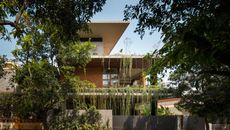 House of Greens in India’s Bengaluru is defined by its cascading foliage
House of Greens in India’s Bengaluru is defined by its cascading foliageNestled in Bengaluru’s suburbs, House of Greens by 4site Architects encourages biophilic architecture by creating a pleasantly leafy urban jungle
By Tianna Williams Published
-
 Surajkund Craft’s Northeast Pavilion in India is an exemplar in bamboo building
Surajkund Craft’s Northeast Pavilion in India is an exemplar in bamboo buildingThe Northeast Pavilion at the Surajkund Craft Fair 2023, designed by atArchitecture, wins Best Use of Bamboo in the Wallpaper* Design Awards 2024
By Ellie Stathaki Published
-
 OpenIdeas has designed Link House, an expansive Gujarat family complex
OpenIdeas has designed Link House, an expansive Gujarat family complexLink House accommodates two households in high modern style in the Indian state of Gujarat, innovatively planned around the requirements of a large extended family
By Jonathan Bell Published
-
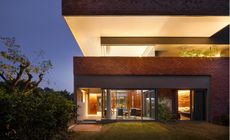 This Chandigarh home is a meditative sanctuary for multigenerational living
This Chandigarh home is a meditative sanctuary for multigenerational livingResidence 91, by Charged Voids is a Chandigarh home built to maintain the tradition of close family ties
By Tianna Williams Published
-
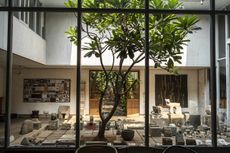 Studio Mumbai exhibition at Fondation Cartier explores craft, architecture and ‘making space’
Studio Mumbai exhibition at Fondation Cartier explores craft, architecture and ‘making space’A Studio Mumbai exhibition at Paris’ Fondation Cartier explores the trailblazing Indian practice’s inspired, hands-on approach
By Amy Serafin Published
-
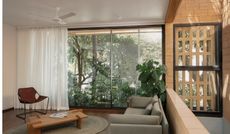 Debris Block House in India’s Bengaluru nestles into its leafy landscape
Debris Block House in India’s Bengaluru nestles into its leafy landscapeDebris Block House by Collective Project intertwines contemporary architecture, flora and roof gardens, as it nestles within its native landscape
By Tianna Williams Published